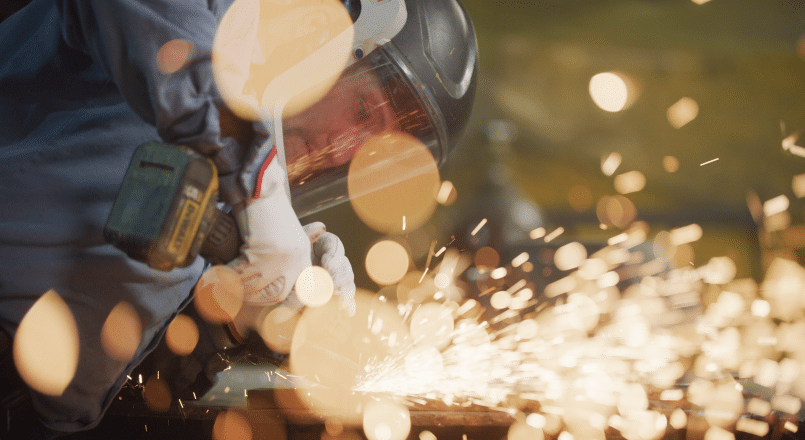
Safety is always a priority, not just at work, but in everything we do. There are no replacements for our people, so there are no substitutes for safety.
June has been designated National Safety Month by the National Safety Council as part of their efforts to increase public awareness of workplace safety, to stay updated with new safety measures and to decrease the number of injuries in our homes and workplaces.
Workplace safety is emphasized every day at Stryten Energy as a core value. Employees across the company focused on four health and safety topics as part of National Safety Month.
Preparing for Emergencies
The first week of June is also National CPR and AED Awareness Week. When Buffalo Bills player Damar Hamlin collapsed on the field, fans witnessed the life-saving efforts of team trainers and paramedics. Sadly, about 90 percent of people who suffer out-of-hospital cardiac arrests die. Stryten Energy plants have employees certified in CPR and first aid. Knowing CPR and how to use an AED can save the life of a loved one, maybe even one of yours.
We practice fire emergency drills at work and school, but don’t forget to create and practice fire drills at home too. Your plans should include two ways to escape from each room in the house and account for everyone in the home, including pets, babies and anyone who may need assistance getting out. Test smoke alarms monthly, replace batteries annually and practice your escape plan at least twice a year.
Avoiding Slips, Trips and Falls
Fall hazards remain a common problem across multiple industries and workplaces. In 2021, worker deaths stemming from slips, trips and falls increased almost six percent from the previous year, according to Bureau of Labor Statistics data. In our facilities, proper footwear is required, and all employees are encouraged to speak up if they see a slip, trip or fall issue that needs to be addressed. Stryten Energy plants have also invested in additional equipment and increased cleaning initiatives to keep walking and working surfaces safe.
Falls are the leading cause of injuries and death from injuries, resulting in 3 million emergency room visits and 800,000 hospitalizations. Unfortunately, as we age, falls become more likely for a variety of reasons, including loss of balance and coordination, poor vision making it difficult to see obstacles and medications which can cause dizziness.
Encourage older family members to speak openly about their health, exercise regularly and schedule annual health screenings. A walk through the home and the yard can help identify areas where grab bars or railing may need to be installed, where lighting may need to be improved or where pathways may need to be cleared of clutter.
Preventing Heat-Related Illness
It takes time to acclimate to a hot manufacturing environment, and even then, heat-related illnesses are a considerable risk. Stryten employees are strongly encouraged to stay hydrated and to take heat breaks if necessary.
We recommend a 2:1 ratio of water to electrolyte drinks. For every one cup of sports drink or electrolyte beverage, drink two cups of water to ensure the proper balance of sodium and potassium. Our employees have access to evaporative coolers and cool-down rooms, as well as plenty of water and electrolyte drinks.
Heat-related illnesses aren’t the only danger during hot summer months. On average, 37 children die each year from being left in a hot car. Temperatures inside a vehicle can rise almost 20 degrees in only 10 minutes.
Babies and small children aren’t the only ones at risk. Older adults, people with disabilities and pets could also be forgotten. Have a “look before you lock” routine or place a reminder such as a purse or cellphone in the back seat as a reminder to check the back before you leave the car. There is no safe amount of time to leave a child, pet or vulnerable adult in a vehicle, even if you are just running a quick errand.
Recognizing Hazards
Awareness is key to recognizing unsafe situations. At Stryten Energy, every employee is empowered to stop what they are doing and say something if they believe their safety or that of others is in jeopardy. Our Environmental, Health and Safety (EHS) team works with plant employees to identify conditions that create hazards and implement policies about how to control them.
As part of our workplace safety focus, EHS recently went through a Job Hazard Analysis to identify existing and potential hazards and determine the methods to eliminate them or protect employees against them. The goal is to keep our facilities as safe as possible. Near miss reporting or “good catches” and “toolbox talks” are peer-to-peer ways to convey critical safety messages. For example, one good catch was a reminder to pay attention to forklift and overhead crane traffic, since these heavy pieces of equipment can’t stop short when someone crosses their path.
Hazards also exist in familiar surroundings. As the weather gets warmer, more people are spending time at the pool. Drowning is a leading cause of death for children. A fence around your swimming pool is a reliable way to keep children and pets from accessing your pool when no one is around. Whenever children are by the pool, make sure there is at least one person who can reliably supervise them.
Our smartphones can also create hazards. Just like distracted driving, distracted walking is on the rise. Ironically, over half of distracted walking injuries occur in our own homes. Pedestrian fatalities have also increased over the years, and teenagers are more likely to be hit by a car than younger children. We all need to remember to put away our phones and be aware of our surroundings.
No Substitutes for Safety
At Stryten Energy, safety is always a priority, not just at work, but in everything we do. We promote safety standards in our plants every minute of every day, not just during National Safety Month. There are no replacements for our people, so there are no substitutes for safety.
Jennifer Meglic, Director, Health and Safety – Operations, Stryten Energy
Note:
Read more about Stryten’s workplace safety program in this blog by Jennifer Meglic.







